如何在数据库中存储层次结构
常见场景
- 公司:公司 - 部门 - 子部门
- 人员:领导 - 员工
- 文件:根目录 - 文件夹 - 文件
- 关系:group - child
实例
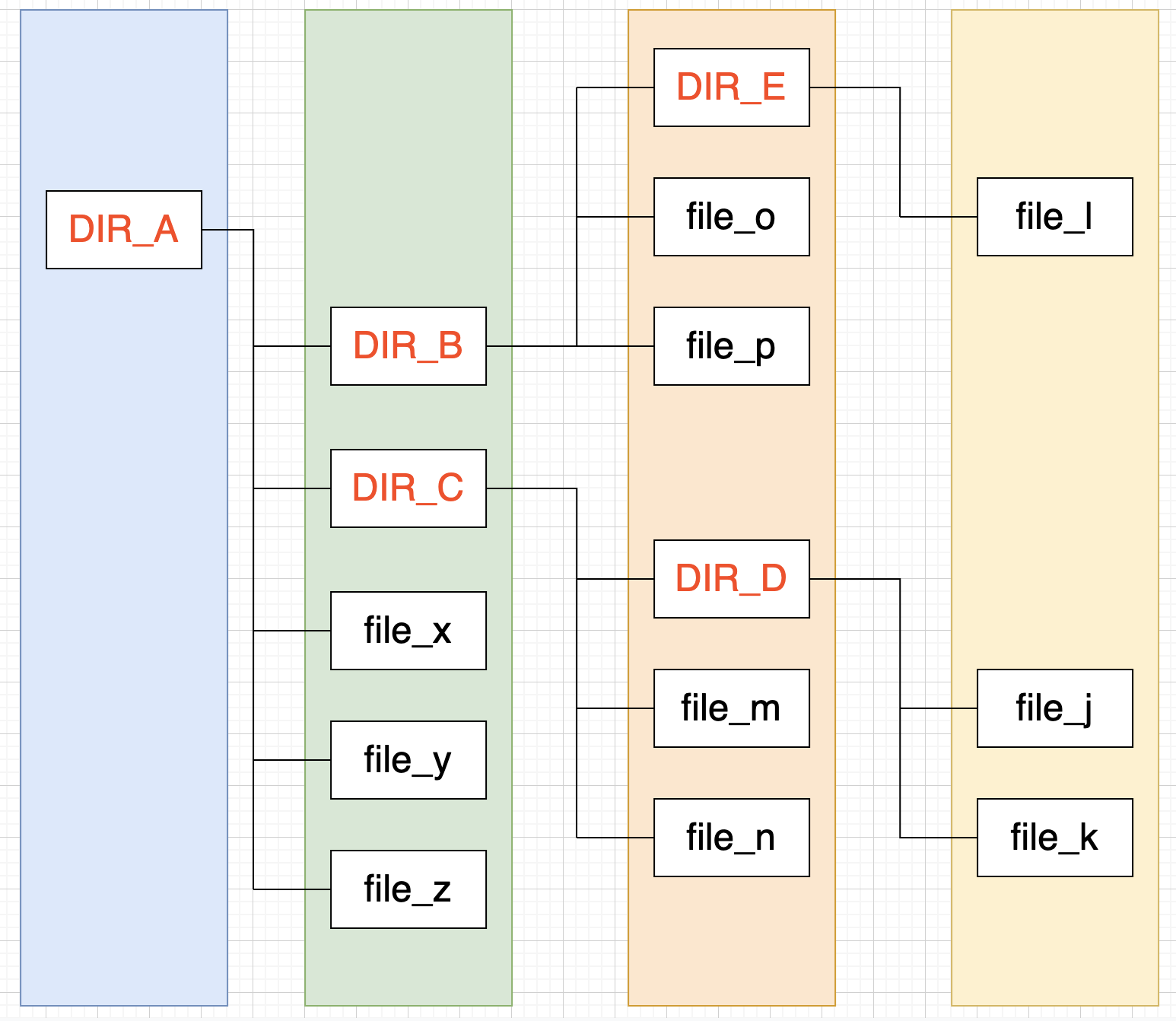
转成树型
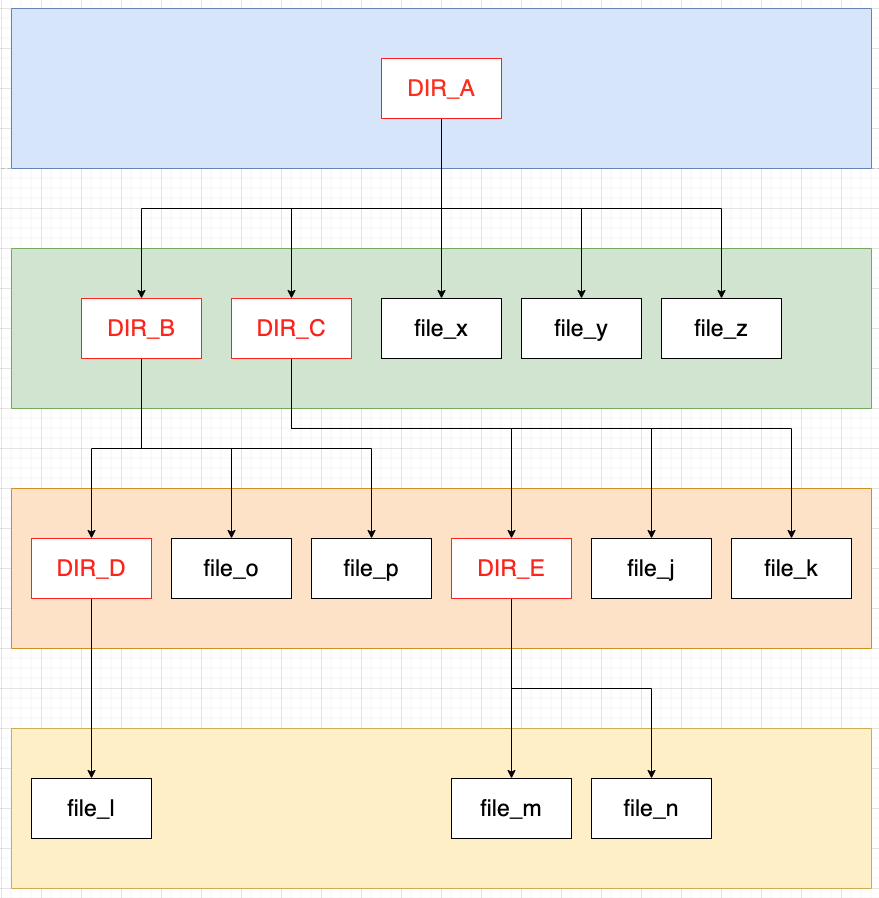
Path Enumerations
每条记录存整个tree path经过的node枚举
| id | name | path |
|---|---|---|
| 1 | DIR_A | /DIR_A |
| 2 | DIR_B | /DIR_A/DIR_B |
| 3 | DIR_C | /DIR_A/DIR_C |
| 4 | file_x | /DIR_A/file_x |
| 5 | file_y | /DIR_A/file_y |
| 6 | file_z | /DIR_A/file_z |
| 7 | DIR_D | /DIR_A/DIR_B/DIR_D |
| 8 | file_o | /DIR_A/DIR_B/file_o |
| 9 | file_p | /DIR_A/DIR_B/file_p |
| 10 | DIR_E | /DIR_A/DIR_C/DIR_E |
| 11 | file_m | /DIR_A/DIR_C/file_m |
| 12 | file_n | /DIR_A/DIR_C/file_n |
| 13 | file_l | /DIR_A/DIR_B/DIR_D/file_l |
| 14 | file_j | /DIR_A/DIR_C/DIR_E/file_j |
| 15 | file_k | /DIR_A/DIR_C/DIR_E/file_k |
各种情况的处理代价
增
代价:-> O(1)
输入:name, path
执行:
insert into table(name, path) values($name, $path); |
| id | name | path |
|---|---|---|
| 13 | file_l | /DIR_A/DIR_B/DIR_D/file_l |
| 14 | file_j | /DIR_A/DIR_C/DIR_E/file_j |
| 15 | file_k | /DIR_A/DIR_C/DIR_E/file_k |
| 16(add) | file_ADD | /DIR_A/DIR_C/DIR_E/file_ADD |
删
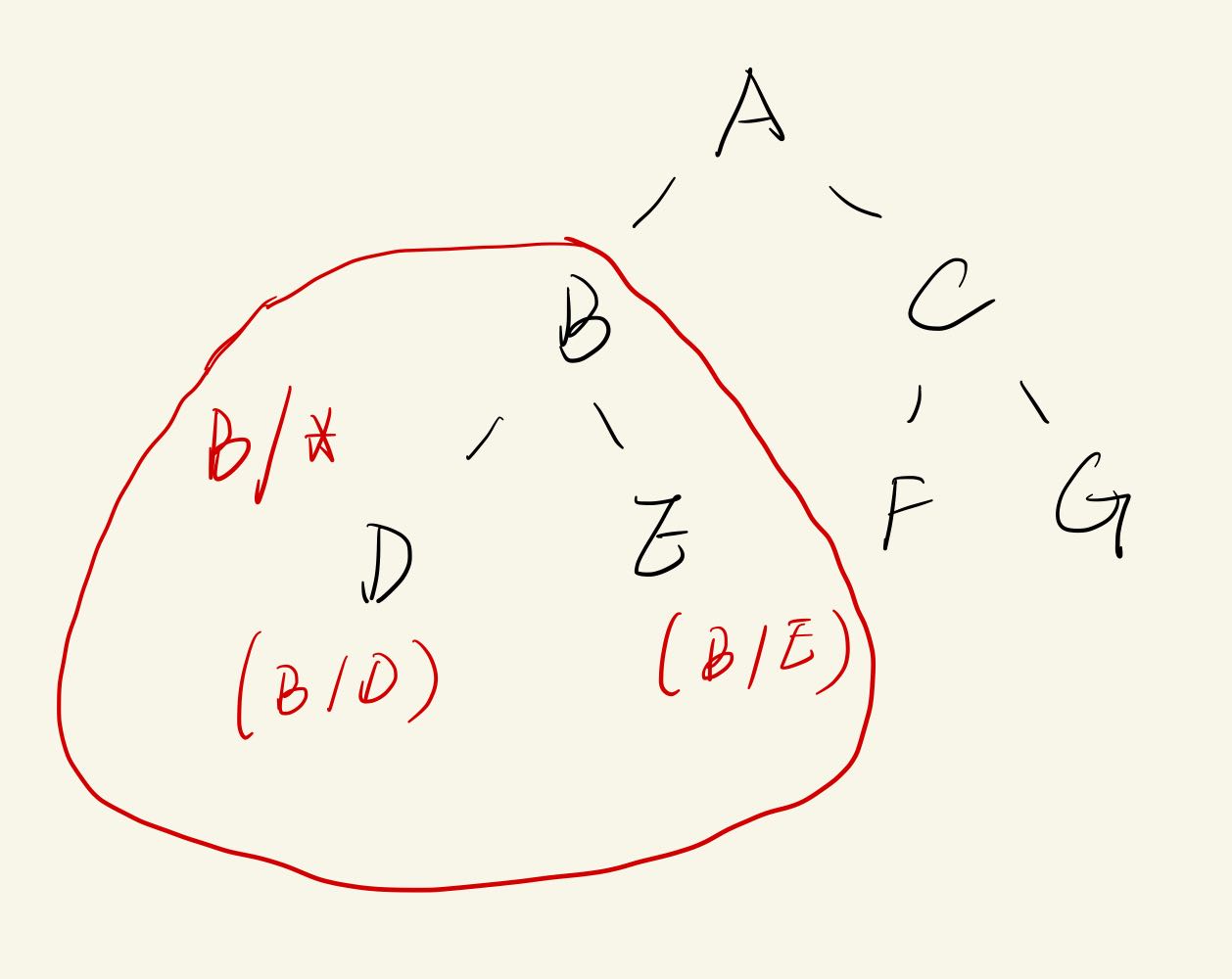
代价:-> O(n)
输入:path
执行:
delete from table where path like CONCAT($path, '%') ; |
改
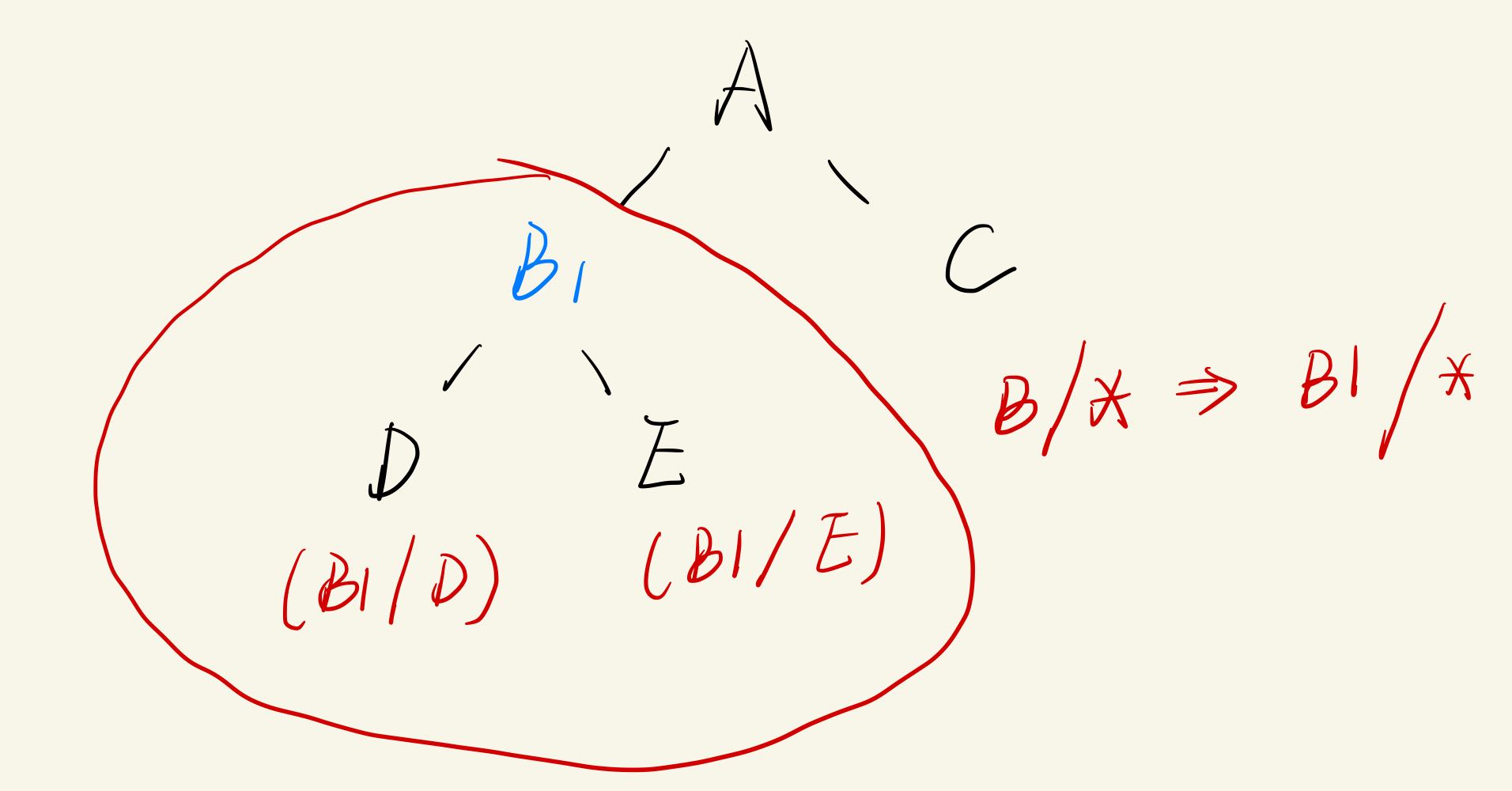
代价:-> O(n)
输入:path, other info
执行:
pre: |
查
查自己
代价:-> O(1)
输入:path
执行:
select * from table where path = $path |
查下一级
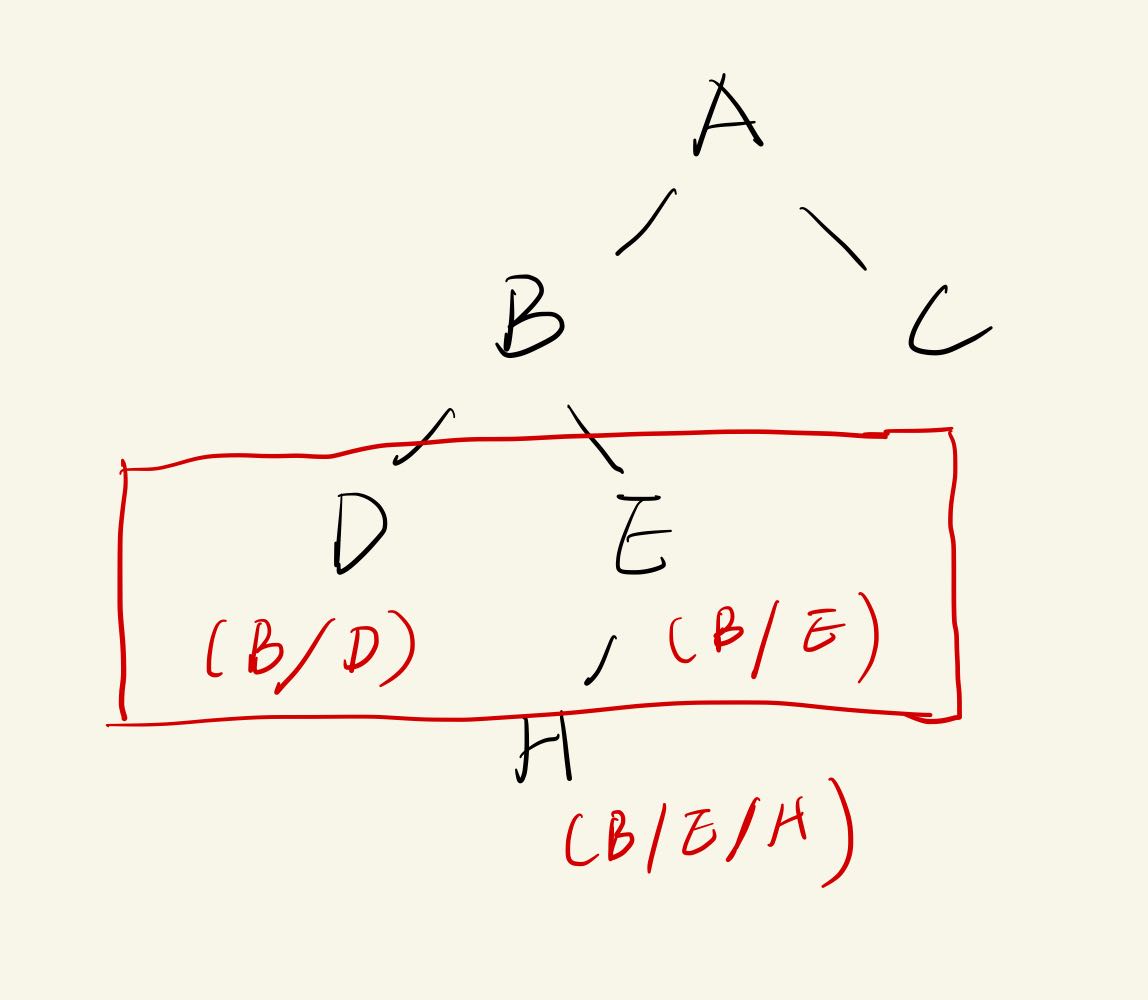
代价:-> O(n)
输入:id
执行:
select * from table where path regexp CONCAT('^', $path, '/.+', '((?!/).)') |
查所有子集
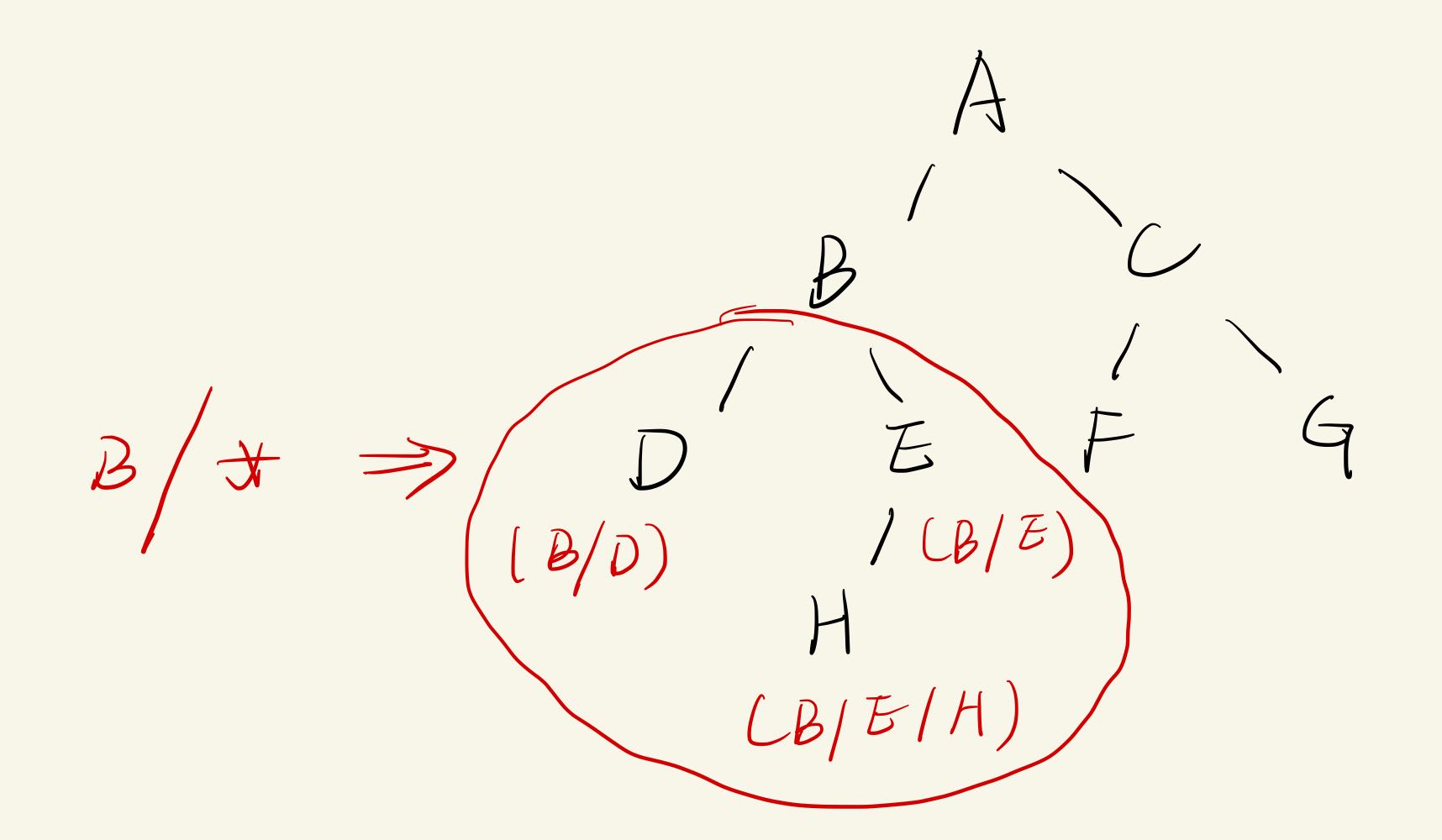
代价:-> O(n)
输入:path
执行:
select * from table where path like CONCAT($path, '/%') |
移动

代价:-> O(n)
输入:path, new_path
执行:
pre: |
总结
可以和邻接表同时使用
优点 : 增加、查询、修改方便
缺点 : 需要大量用到正则、模糊匹配;需要控制层级深度(致命)
适用 : 对层级深度有一定限制,并且需求对所有子集进行操作的场景